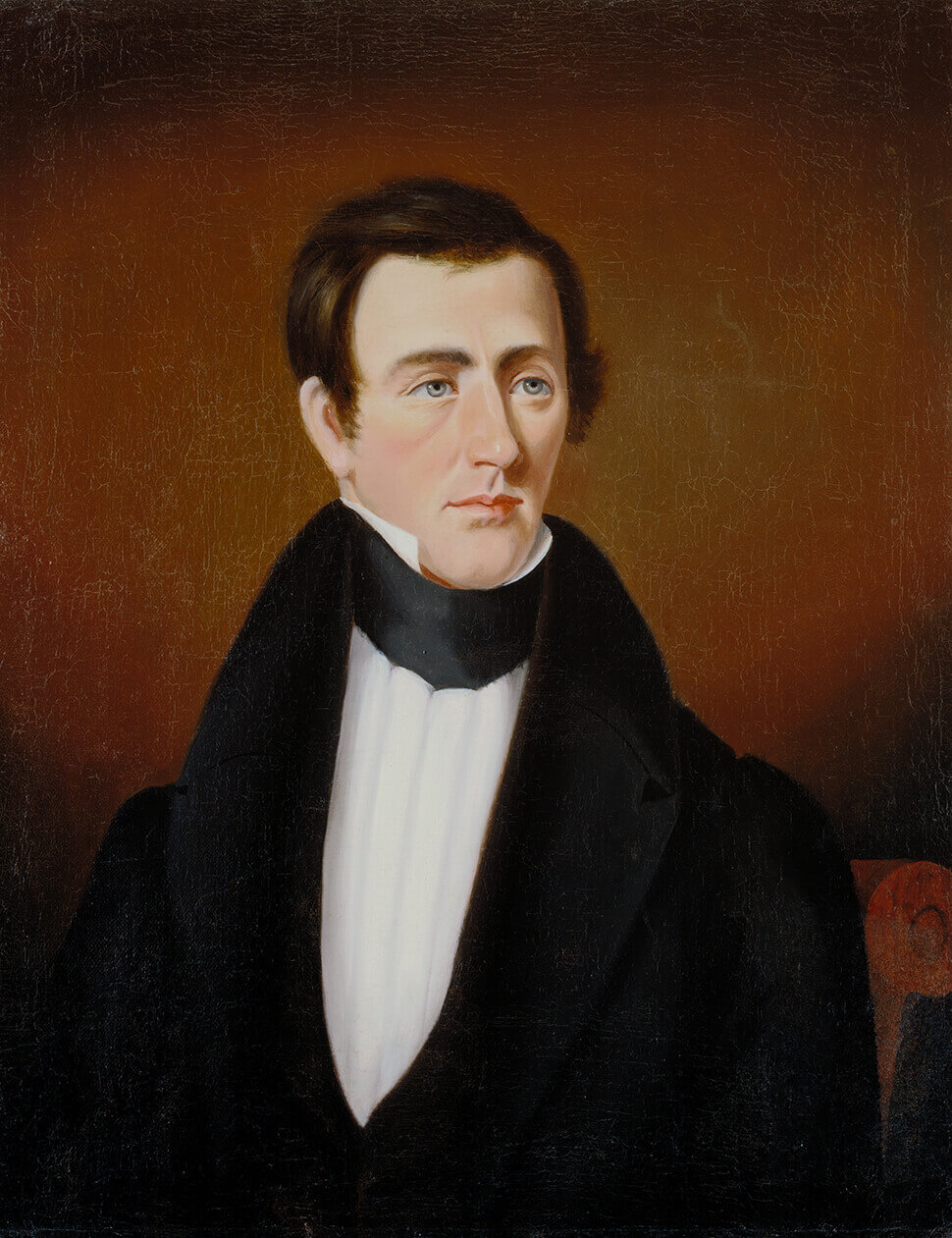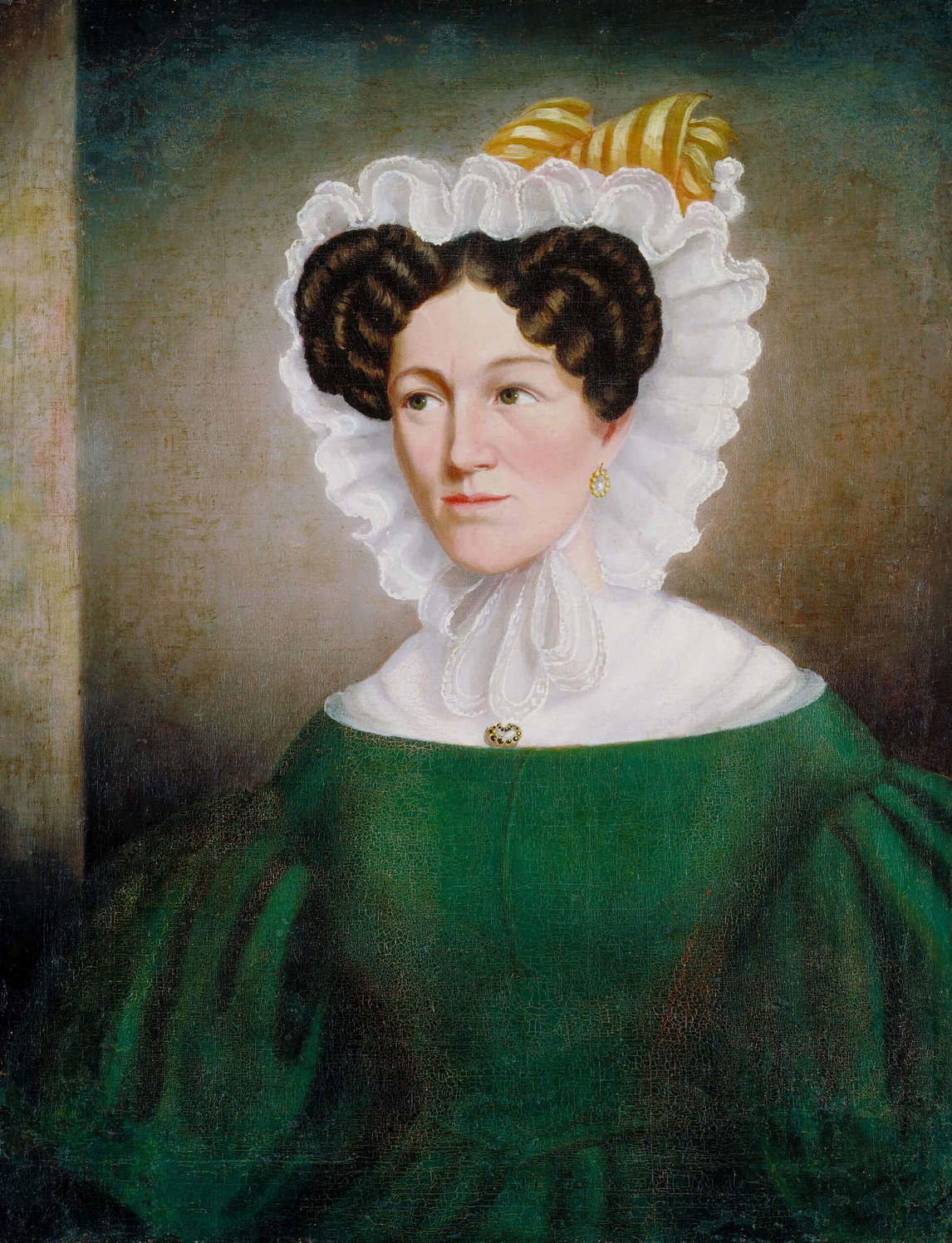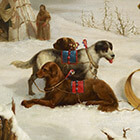Freeman Schermerhorn Clench c. 1834–36

Paul Kane, Freeman Schermerhorn Clench, c. 1834–36
Oil on canvas, 71 x 56 cm
National Gallery of Canada, Ottawa

Paul Kane painted this portrait of Freeman Clench as one of a pair, to be hung with the portrait of Freeman’s wife, Eliza Clench. These pendant portraits represent Kane’s initial plan for earning his living as an artist. They date from his two-year period in Cobourg, Ontario, when he took advantage of social connections to develop his skills in portraiture. He would have known the Clenches either through working for the Clench furniture business or through his contact with Wilson S. Conger, Kane’s former employer in Toronto who moved to Cobourg in 1829 and became a prominent citizen through his positions in municipal office.
The paintings portray the Clenches as fashionably dressed, and Eliza’s gold locket and earrings are especially indicative of the family’s status. Kane’s society portraits from this period reflect a professional competence within a naive, linear style. While some sense of the individual sitters is discernible, the elongated necks, enhanced by the fashion of the period, and the patterning of hair and costume mimic a stylization typical of portraiture at the time. The plain background with a broad halo effect behind the head is a focusing device Kane would continue to use throughout his career.
Although neither Clench portrait is signed (typical of Kane), they have been attributed to Kane based on the comparison of the pigments with the contents of his studio paint box, as well as on his close relationship with the Clench family. Both portraits were handed down through the family until their acquisition by the National Gallery of Canada in 1990.

 About the Author
About the Author
 More Online Art Books
More Online Art Books
 Acknowledgements
Acknowledgements